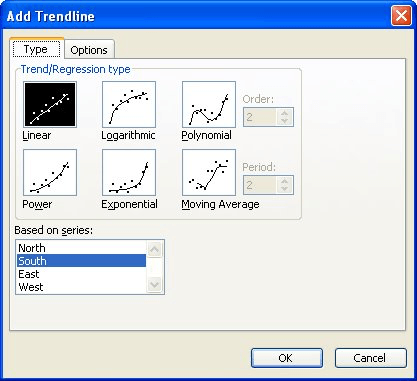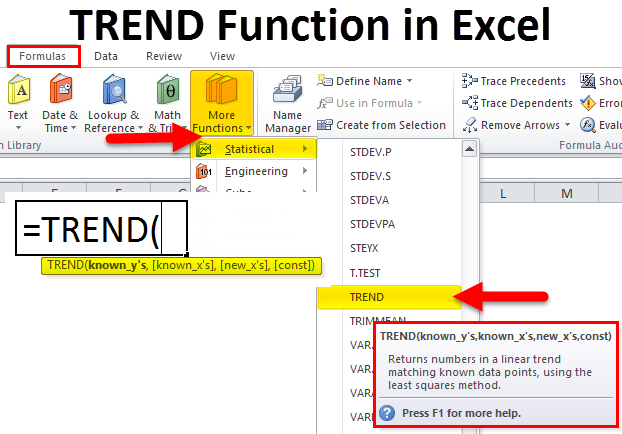

- #Excel trendline in the bacl how to
- #Excel trendline in the bacl update
- #Excel trendline in the bacl series
#Excel trendline in the bacl series
In this example, I subtracted the standard error (cell c4) from the average (cell C2).įind the upper and lower error bound for every time series in your data. Similarly, subtract the error from the average to find the lower bound.

So in our example, I added the average (cell C2) and the standard error (cell c4). To find the upper bound of an error band, simply add the error to the average. STEP 2: FIND THE UPPER AND LOWER BOUNDS OF EACH ERROR BAND In the example above, I use standard error but you could also use a confidence interval, standard deviation, variance, or any other measurement of uncertainty.īelow the rows containing the averages and standard deviations, we will add additional rows for the upper and lower bound of each error band.
#Excel trendline in the bacl how to
Excel: How to create a dual axis chart with overla.

Tableau: Dual axis chart with overlapping bars and.Tableau Tip: 7 easy steps to create a combination.Overcoming resistance & building champions - Alber.If that “change” in the bar size really bothers you, then simply add the data table under the chart:ĭon’t we all love challenges! I know I do. The purpose of the chart, after all, is to give the overall trends and comparisons anyway, not focus on the original data. I would go with option 3 because the naked eye won’t be able to discern the difference to the bar height anyway. Leave the bars thick so that you can clearly see the overlap.Change the data to account for the thickness, but it’s kinda scary to me to alter the data because if you mouse over the point you see the original data.Make the border of the bar in the back really thin, but this makes it challenging to see the overlap.This leaves you with a couple of options: This is critical because we’ve changed the height of the bar in the back by adding the border. Now wait, I mentioned earlier that you should delete the gridlines. That’s it! You’ve create a dual-axis chart in Excel with overlapping bars on the primary axis and a line on the secondary axis.Choose the Border Styles option, change the Width to 10pt (or whatever floats your boat) and change the Cap type to Flat and the Join type to Miter.Alternatively, you can calculate the equation of the line using the SLOPE and INTERCEPT function in Microsoft excel. Plotting the data pairs in the chart is essential for data display. Choose the Border Color option, select Solid Line and set the color to the same color as the bar (in my case, light gray) Microsoft Excel comes with features that help you plot the data pairs in a chart, add a calibration curve (trendline), and display the curveé equation on the chart.Give the bars the “overlap” look (these are the most important steps to give the bars the proper) by right-clicking on the gray bar (i.e., the bar that’s in the first column of the table) and choosing Format Data Series.Remove the gridlines (important…I’ll explain in a bit) and add the axis labels (I hate it when people create dual-axis charts in Excel and don’t add the axis labels!).The two bars on the primary axis now completely overlap each other.Right-click on one of the bars that are on the primary axis and choose Format Data Series.With the bars on the secondary axis still highlighted, from the Chart Tools Design menu, change the Chart Type to a line.Change the Plot Series On option to Secondary Axis.Right-click on one of the bars that you want on the secondary axis and choose Format Data Series.

#Excel trendline in the bacl update
Well, I really didn’t HAVE to create the chart in Excel, but others needed to be able to update the chart and they, gasp, don’t have a Tableau license. Tableau makes this task incredibly easy, but I needed to do this in Excel. I needed to create a dual-axis chart, with two bars on the primary axis and a line on the secondary axis. I came across a challenge last week while working on a project.


 0 kommentar(er)
0 kommentar(er)
